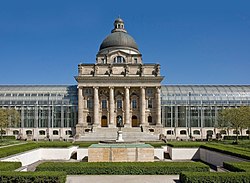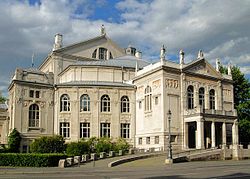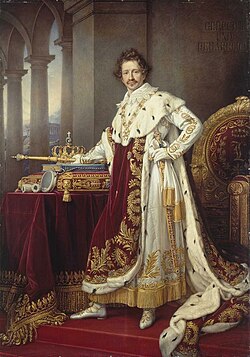The following outline is provided as an overview of and topical guide to Munich:
Contents
- General reference
- Geography of Munich
- Location of Munich
- Environment of Munich
- Areas of Munich
- Locations in Munich
- Demographics of Munich
- Government and politics of Munich
- Law and order in Munich
- Military in Munich
- History of Munich
- History of Munich, by period or event
- History of Munich, by subject
- Culture of Munich
- Arts in Munich
- Religion in Munich
- Sports in Munich
- Economy and infrastructure of Munich
- Transportation in Munich
- Education in Munich
- Healthcare in Munich
- See also
- References
- External links
Munich – capital and the most populated city in the German state of Bavaria. With over 1,450,000 residents in 310.43 km2 (119.86 sq mi) it is also Germany's third most populated Großstadt. Munich is considered a global city as of 2015 [update] , [1] one of the most prosperous and fastest growing cities in Germany.












































